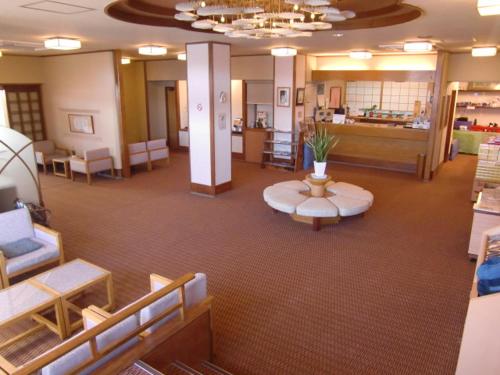Seiganto-ji Temple
menuMenu
The striking red three-storied pagoda rising against the backdrop of Nachi Falls captivates visitors, harmonizing beautifully with the majestic natural scenery.






Highlights
- The red three-storied pagoda standing against the backdrop of Nachi Falls is a breathtaking sight.
- As the first temple of the Saigoku Sanjusan-so pilgrimage route, it has attracted numerous devotees throughout history.
- It is registered as part of the UNESCO World Heritage site, "Sacred Sites and Pilgrimage Routes in the Kii Mountain Range."
- Numerous historical structures remain, including the main hall and Hōkyō-intō pagoda, designated as Important Cultural Properties.
- You can enjoy the beautiful scenery throughout the four seasons.
Basic Information
- Address
- 8 Nachisan, Nachikatsuura-cho, Higashimuro-gun, Wakayama Prefecture Search for tourist attractions in Wakayama
- Access
- Take the JR Kisei Main Line (Kinokuni Line) to Kii-Katsuura Station, then ride the Kumano Gobo Nankai Bus bound for Nachisan for 30 minutes. Get off at the Nachisan stop. From the Kinokuni Line Nachi-eki-mae intersection on National Route 42, head uphill along the Nachi River for approximately 8 kilometers. Show route
- Op.Hours
- 7:00 AM to 4:30 PM (Daily)
- Cld.Days
- No holidays
- Fee
- Entrance Fee: ¥300
- INFO
- There are many parking lots around Nachisan. Free parking lots are more common further up the mountain, but they tend to fill up quickly, so please be aware.
Overview
Recommended nearby attractions
Fukuraku-zanji Temple

The birthplace of "Fukuraku Tokai," the ancient pilgrimage to the Pure Land of Kannon (Fukuraku-zan). A temple registered as a World Heritage site.
Kumano Hayatama Taisha

Kumano Hayatama Taisha, known as one of the most sacred sites among the Kumano Sanzan. Popular as a power spot, it boasts numerous historical structures within its grounds.
Kumano Hongu Taisha Shrine

Kumano Hongu Taisha Shrine, surrounded by majestic nature, is a power spot that has drawn people's faith for centuries. As part of the UNESCO World Heritage site "Sacred Sites and Pilgrimage Routes in the Kii Mountain Range", it's a place where you can feel history and mystery.
Kumano Nachi Taisha Shrine

Kumano Nachi Taisha Shrine is one of the Kumano Sanzan shrines, registered as a World Heritage site, "Sacred Sites and Pilgrimage Routes in the Kii Mountain Range".
Tōkei Jinja Shrine

Registered as a World Heritage site, Tōkei Jinja Shrine boasts a captivating group of shrine buildings that speak to the history of Kumano faith. Spend a peaceful time in a tranquil setting surrounded by history and nature.
Tamaki Jinja Shrine

Perched atop Tamakiyama at an elevation of 960 meters, this is the inner shrine of the Kumano Sanzan pilgrimage sites. A sacred power spot filled with giant trees, including the Jindaisugi (ancient cedar).
Omine Okugake-michi

Trek a challenging mountain path connecting Yoshino and Kumano, immersing yourself in history and spirituality!
Kumano Kodo Iseji Nikishima

Kumano Kodo Iseji Nikishima offers a hiking course where you can enjoy nature while experiencing a sense of history.
Oyu no Hara

A sacred place where the main hall of Kumano Hongu Taisha Grand Shrine once stood. Take a stroll and feel the weight of history.
Onigajyo (Devil's Castle)

The majestic view of countless sea-eroded caves of various sizes, formed by the rough waves of the Kumano Nada, cascading down in a stair-like formation is absolutely breathtaking.
Nearby Hotels
Pals Inn katsuura

Maguro no Yado Minshuku Kamenoi

KAMENOI HOTEL NACHI KATSUURA

Hotel Sunrise Katsuura

Onsenminshuku Kosakaya

Oyado Hana

Minshuku Wakatake

Why Kumano

Manseiro

Ooedo-Onsen-Monogatari Premium: Koshinoyu

